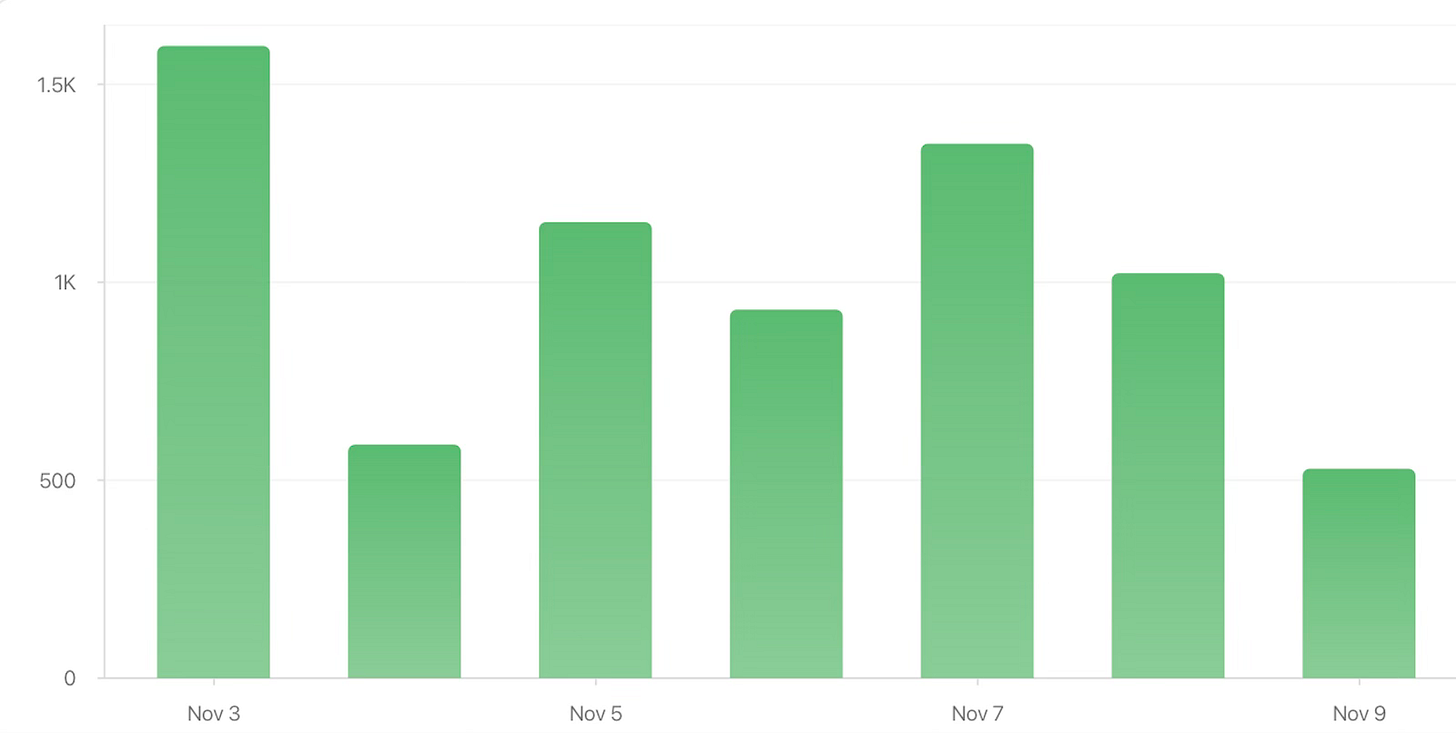Special Education Today newsletter 5(19)
How much of the past week's activity slipped by you?
Welcome to the this week’s issue of the Special Education Today newsletter. It’s the 19th newsletter for the 5th volume, and it’s for the week that began 3 November 2025. Like the preceding newsletters, it includes a photo, some status notes, a list of recent posts, and a bit of an editorial.
Photo
Some friends sent us some cut flowers recently. We didn’t expect them, but it sure was nice to have them sitting on the kitchen island for days (and days; they lasted a long time).

Thanks, T. & E. Lovely surprise! Thanks, Pat, for the photo.
Updates
We have the pleasure of welcoming Vince C. to the list of folks supporting SET. There are also a batch (maybe a dozen?) new free subscribers, too. Welcome to you all!
Thanks to Mike G., Tina C., Michael K., Clay K., Li-Yu H., Jean C., and Mike N. for their comments on posts this past week. Y’all are doing the work that I hope will help turn the comments sections into conversations among members of the community.
Here is a graph showing the total views by day for the past week. It’s difficult to read the scale on the left, but the top if it is“1.5k.”
I can report that we are a group of > 1000 subscribers. I’d like to see SET grow larger, of course, but at least we can see that our community is growing and that members of it are interacting with the content. Yay!
I plan to identify education leaders in governments of countries around Earth and send them personal invitations to subscribe. I hope this will boost our international reach. If you know of other special educators who might benefit from subscribing, please share SET with them, too!
Spedlettes
There were eight new posts on SET durning the just-passed week.1 Here is the listing of them, beginning with newsletter for the 3 November 2025 (which was the 1481th post in SET’s history).
Special Education Today newsletter 5(18): What would you like to know about what’s happening in SET land? [JWL]
Nov. ‘25 SIAT newsletter is available: Who wants to know trustworthy information about autism? [JWL]
Marthe Gautier, 1925-2022: Celebrating the scientist who counted and saw that there was an extra chromosome in the cells of individuals with Down syndrome [JWL]
UK schools testing a neurodiversity friendly program: Does malarky have a dormant phase before re-emerging? [JWL]
Autism links among Bolivia, Kenya, and Virginia: What are teams around Earth sharing? [JWL]
Organization leaders expressed concerns about special education: What did groups’ heads say to the press? [JWL]
Sandra B. Cohen, 1947-2025: Remembering a dedicated teacher educator and a fine colleague [JWL]
Effective practice promotes mastery: Did David Didau go far enough in his promotion of effective practice? [JWL]
There we have the corpus of posts for the week. There's a little of this and that, some that will be of greater interest to some readers than to others, but I hope none that were of interest to no one.
Notes & comment
In researching for the post about the practice of practice (“Effective practice promotes mastery”), I had two find the article by Carl Binder, Elisabeth Houghton, and Barbara Bateman (2002) from the SET repository of resources. AS I did so, I realized that the availability of those resources may not be current in everyone’s memory stack. Y’all might want to know that there are downloadable documents there some of you could possibly use.
Mandy Rispoli and I referred to it this “library” (Special Education Resources Dissemination) in a 2 October 2025 post about a poster presentation she and colleagues had made about functional behavior assessment. She published a copy of the poster in the library.
So that’s two relatively recent pointers at the library. Still, curious readers may not have taken the time when chasing those pointers to see what else is there. So, here’s a fifo2 list of those (free) resources:
Lloyd, “Block Scheduling Notes”;
Kauffman et al., “Violence Statement”;
Martin et al., EBD placement database;
Hallahan et al. (1982), Self-monitoring Manual;
Binder et al. (2002), Mastery-fluency paper;
Johns et al., RTI-MTSS critique;
Rispoli et al., ABCD poster;
The reference to Binder et al. that follows illustrates how to cite these documents. Note that they are all hidden behind the same Digital Object Identifier (“doi”).
Okay, so I’ve run out of strength. Sigh. Allow me to beseech you to take care of yourselves and each other. Please encourage your pals3 to buckle up, drive carefully, eat healthily, exercise (I’ve been slack), and teach your students well. And thanks to each and every reader for everything that you do for kids with disabilities.
JohnL
John Wills Lloyd, Ph.D.
Founder and Editor, Special Education Today
Reference
Binder, C., Haughton, E., & Bateman, B. (2002). Fluency: Achieving true mastery in the learning process. SpecialEducationToday.com. https://doi.org/10.17605/OSF.IO/U9JA53
SET should not be confused with a product that uses the same name and is published by the Council for Exceptional Children. SET predated CEC’s publication by decades. Despite my appreciation for CEC, this product is not designed to promote that organization nor should the views expressed here be considered to represent the views or policies of that organization.
Footnotes
I’m only counting posts that were published on the Web page at SpecialEducationToday.com. As some of you know, I also drop “notes,” If one logs into the Web site and slick on “notes” in the array near the top, one’ll likely be shown the notes.
The old programming acronym, “fifo,” refers to “first-in-first-out.” That describes the order of items in an array or stack of “memory.” The items are ordered by when they were added to the stack (“first in” as opposed to “last in”) and the order in which they are removed from the stack (“first out” as opposed to “last in”). Thus, fifo differs in a specific way from lifo.
Include your family members and, shoot, even your enemies in the taking-care-of activities.

